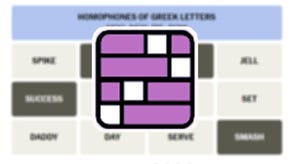Nvidia GeForce GTX 1660 Ti: Performance Analysis
Rise/Shadow of the Tomb Raider, The Witcher 3.
Our tests conclude with a final trio of games - Rise of the Tomb Raider, Shadow of the Tomb Raider and The Witcher 3. Our test system for all benches across this entire review consists of a Core i7 8700K running at an all-core turbo speed of 4.7GHz. This is paired with two 8GB sticks of 3400MHz DDR4 supplied by GSkill, with all titles running from solid state storage. A Corsair H110i all-in-one liquid cooler is used to keep the power-hungry 8700K in check.
Depending on how you view this page, our performance metrics are presented in one of two ways. If you're reading this on a mobile device, you'll get a table with average frame-rate and lowest one per cent measurements. However, if you're on a desktop or laptop, you get the full-blooded Digital Foundry experience. Play the YouTube videos to see frame-rate and frame-time metrics running in parallel to the video (you can even navigate around the video with the graphs adjusting to match). Beneath that you'll see our barcharts, dynamically generated from the frame-time metrics - mouse over for various stats and press the mouse button to swap over to the more useful percentage differentials.
We use FCAT for analysing GPU performance. A coloured border is overlaid in each rendered frame, the video feed from the GPU is captured and the files are then scanned with our own proprietary software. The captures are distilled down into text files which are used to dynamically generate the data presented on this page.
Rise of the Tomb Raider
Our tale of two Tomb Raiders begins with the older iteration of Crystal Dynamics' Foundation engine - and the results here are likely to prove very familiar to anyone who has read our previous Turing coverage. In contrast to its successor, Rise drops between two and five points compared to the Pascal-powered GTX 1070, though we're still looking at a decent 32 to 33 per cent uplift over GTX 1060.
Rise of the Tomb Raider: Very High, SMAA
Shadow of the Tomb Raider
Once again we have feelings of deja vu here. Whereas GTX 1660 Ti lagged behind GTX 1070 in Rise of the Tomb Raider, there's a definite reversal of fortune with Shadow, based on the latest iteration of the Foundation engine. The new Turing card offers a five to six per cent lead over the GTX 1070, with a massive 46 to 47 per cent lead over the outgoing GTX 1060. Vega 56 is usefully ahead here, though maybe not to the extent it should be bearing in mind its significantly higher price-point.
Shadow of the Tomb Raider: Highest, TAA
The Witcher 3
The Witcher 3 isn't exactly the GTX 1060's finest hour here in terms of overall rankings, with RX 580 and RX 590 significantly ahead. The higher tier cards take things to the next level, with big performance uplifts. However, the GTX 1660 Ti falls behind both GTX 1070 and Vega 56, but with that said, it's still delivering circa 90fps at 1080p and can easily deliver at 1440p60 experience with minimal settings tweaks.
Witcher 3: Ultra, Post-AA, No Hairworks
Nvidia GeForce RTX 1660 Ti Analysis
- Introduction, Hardware Breakdown
- Assassin's Creed Odyssey/Unity, Battlefield 1 - Performance Analysis Part 1
- Crysis 3, Far Cry 5, Ghost Recon Wildlands - Performance Analysis Part 2
- Rise of the Tomb Raider, Shadow of the Tomb Raider, The Witcher 3 - Performance Analysis Part 3 [This Page]
- Nvidia GeForce GTX 1660 Ti - the Digital Foundry verdict








